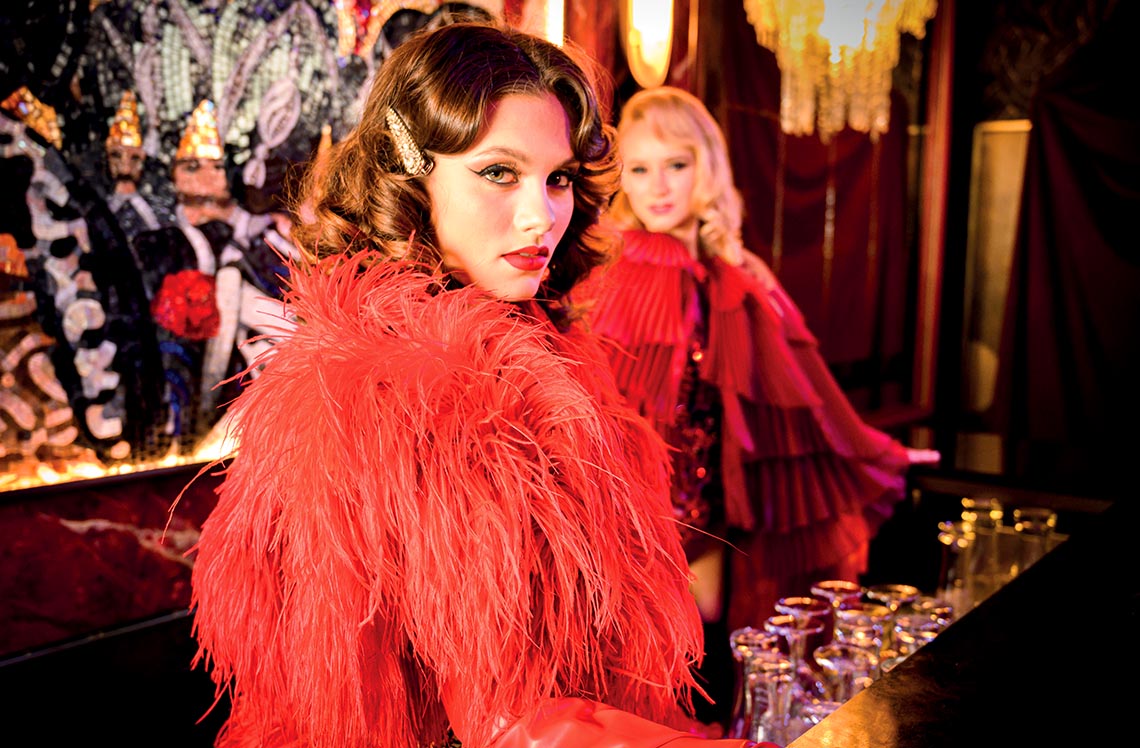Paris is famous, among other things, for its many iconic monuments. Among them is the oldest cabaret, the Paradis Latin. Discover why this venue is inseparable from the history of Paris, and how the concept of the cabaret has evolved over the centuries to become a cultural and social phenomenon around the world.
The Origins of Parisian Cabarets
The word “cabaret,” which appeared in the French language in the 13th century, originally referred only to a drinking establishment. Similar to a tavern, customers could consume wine and, often, a full meal. Those where it was also possible to sleep were called inns.
This type of establishment has existed in Europe since ancient times. In these places of conviviality, socializing, and meeting, where common people, workers, vagrants, counterfeiters, and prostitutes meet, it is not uncommon to indulge in drunkenness. In addition to being able to get drunk and eat there at any time of the day or night, people smoke, do business, play games of chance, and sometimes even fight.
The original old cabarets are therefore very different from those we know today. These were not performance venues at the time, although on occasion it was possible to attend impromptu performances when, galvanized by the effects of alcohol, poets began to recite their verses or customers began to sing along.
From the Café-Concert to the Artistic Cabaret
From the 17th century onwards, Paris had numerous cafés. These were gathering places, but at the time, neither alcohol nor food were served. More orderly and “civilized” than cabarets, they were less conducive to debauchery.
However, it was in cafés, around the 1830s, that performances began to be offered to customers for their entertainment. Owners had a stage installed inside their establishments to allow singers and musicians to perform. Quickly nicknamed café-concerts, or more familiarly “caf’conc,” they reached their peak between the 1860s and 1890s. In the 19th century, the outskirts of Paris were also home to numerous open-air dance halls, a kind of popular dance hall where people could drink, eat, and dance to the sounds of an orchestra.
The word “cabaret,” however, only took on a new meaning in 1881. That year, Rodolphe Salis created a new kind of establishment: the Chat Noir. Located at the foot of Montmartre, this cabaret was the first drinking establishment with artistic ambitions. Conceived as a space for freedom of expression and creativity, customers could consume alcoholic beverages while attending artistic performances.
The Expansion of Cabarets in Paris, Europe, and the World
The concept of cabaret, in the sense of a place of artistic entertainment where one could also eat, emerged in Paris at the end of the 19th century and quickly spread throughout Europe. The cabaret saga began. From Spain to Germany, from Austria to the United Kingdom, from Czechoslovakia to Russia, the example of the Chat Noir became a model.
During the Belle Époque, Parisian cabarets and those that flourished in major European cities such as Berlin, Vienna, Budapest, Prague, and Saint Petersburg offered a variety of shows that combined poetry, music, comedy, theater, dance, and acrobatics in a generally subversive style. In Paris, the French Cancan was also featured prominently.
Across Europe, many cabarets also became popular meeting places for intellectuals and artists, who found a space to express themselves and discuss art, politics, and society. Cabarets often reflected the social and cultural trends of their time and helped spread the spirit of modernity. For example, the Dada movement was born at the Cabaret Voltaire in Zurich in 1916.
Other cities around the world, particularly across the Atlantic in the United States and Canada, adopted this form of entertainment. In New York City, for example, the cabaret took on a distinct form with establishments like the Cotton Club and the Café Society, where the jazz music scene flourished.
Despite this global expansion, Paris has always held a special place in the history of cabarets.
The Eventful History of Paris’s Oldest Cabaret
In January 1889, in the heart of the Latin Quarter, the inauguration of a cabaret, the Paradis Latin, did not go unnoticed. Built for the Universal Exhibition held that year, like the Eiffel Tower, the Paradis Latin dazzled the public with its architectural beauty. Both buildings are the work of Gustave Eiffel.
The site where the Paradis Latin stands has an even older history. Before becoming a famous cabaret, it housed the Théâtre Latin, founded in 1803 by Napoleon Bonaparte. However, the theater was destroyed by fire in 1870. Its reconstruction by Gustave Eiffel allowed it to be reborn as a cabaret. The reconstructed building has survived through the ages.
Today, the Paradis Latin is the oldest cabaret in Paris still in operation. For decades, it has attracted visitors from around the world with breathtaking shows that, true to the Parisian cabaret tradition, always include a French can-can number.
In addition to the shows, the Paradis Latin offers delicious dinners, accompanied by wine and Champagne, which perfectly complement the experience.







